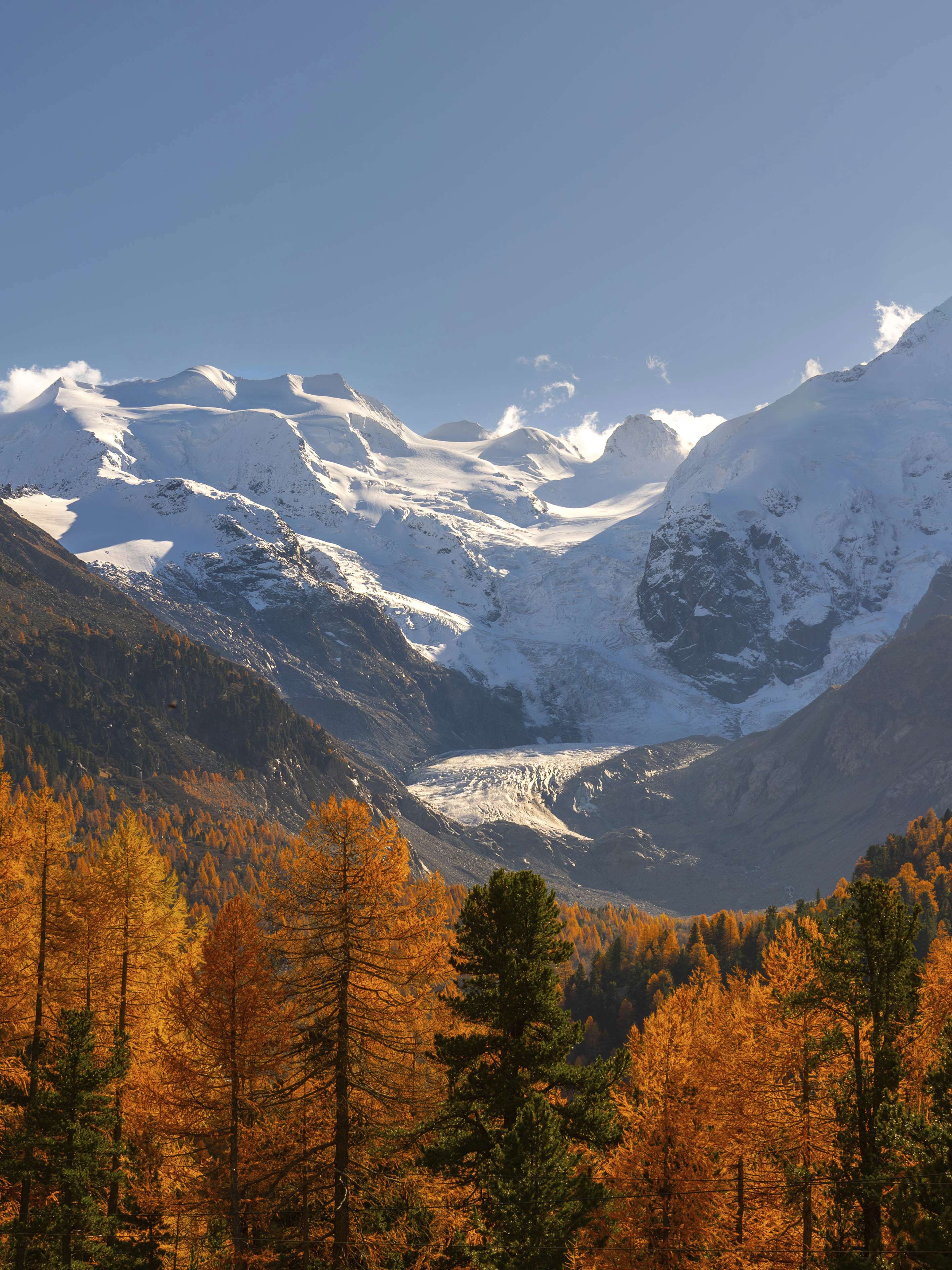Bernina Pass
Start your adventure from the Grand Hotel des Bains Kempinski St. Moritz, the perfect launching point for driving enthusiasts. The Bernina Pass offers one of the most scenic routes in Europe, combining stunning landscapes with a rich history. This alpine road connects the Upper Engadine, Poschiavo and Valtellina, providing an unforgettable journey through mountains, valleys and lakes.
Driving Experience
Distance: 37 km
Summit: 2,328 m
Max Gradient: 10%
The Bernina Pass offers a thrilling drive, climbing from the Engadine valley to the summit at 2,328 metres. This road is renowned for its open curves and breathtaking scenery, with views of glaciers, alpine meadows, and turquoise lakes.
The drive begins with a steady ascent from St. Moritz, with the Bernina railway often running parallel, adding a touch of nostalgia. Along the way, you’ll encounter Lago Bianco, a striking lake whose pale waters contrast with the surrounding dark mountains. Stop at the summit for a quick photo opportunity and enjoy views that stretch toward the Italian Alps.
The descent into Poschiavo and Valtellina offers smooth curves, ideal for appreciating the views while keeping a steady pace. The changing landscape—from high alpine terrain to lush valleys—makes the Bernina Pass a must for any car enthusiast.
Seasonal Considerations
The Bernina Pass is one of the highest alpine passes open year-round. In winter, the snowy landscape adds a magical touch, though drivers should prepare for icy conditions. Winter tyres and careful driving are essential during colder months.
Points of Interest
Lago Bianco: This hydroelectric storage lake at the summit offers a serene stop during your journey.
Bernina Railway: Watch for the iconic red trains, which travel over the pass and provide spectacular views from their windows.
Valtellina Valley: The descent leads you into this famous wine region in northern Italy, perfect for a scenic break before returning to St. Moritz.
History
The Bernina Pass has been used for millennia, as evidenced by the discovery of several Stone Age menhirs. While not as significant a trade route as the Splügen or Septimer passes, it gained importance in 1512 when the Three Leagues conquered Valtellina. The Bernina became a key route between Switzerland and the Republic of Venice, facilitating trade and diplomacy.
By the mid-16th century, French messengers regularly travelled between Lyon and Venice, using the Albula, Bernina and Aprica passes. Historically, the Bernina featured two routes—east and west—used depending on the season and snow conditions. However, after a fatal avalanche in the early 19th century, winter use of the west route was banned, prompting a widening of the safer east route between 1842 and 1865.
The Bernina railway was inaugurated in 1910, with the scenic train line travelling over the pass year-round by 1913. The railway is powered by the Lago Bianco hydroelectric storage lake, a unique feature that adds to the region’s charm.
Continue Your Driving Adventure
For an alternative route to St. Moritz, consider driving the Flüela Pass, with its beautiful roads and rich nature.





